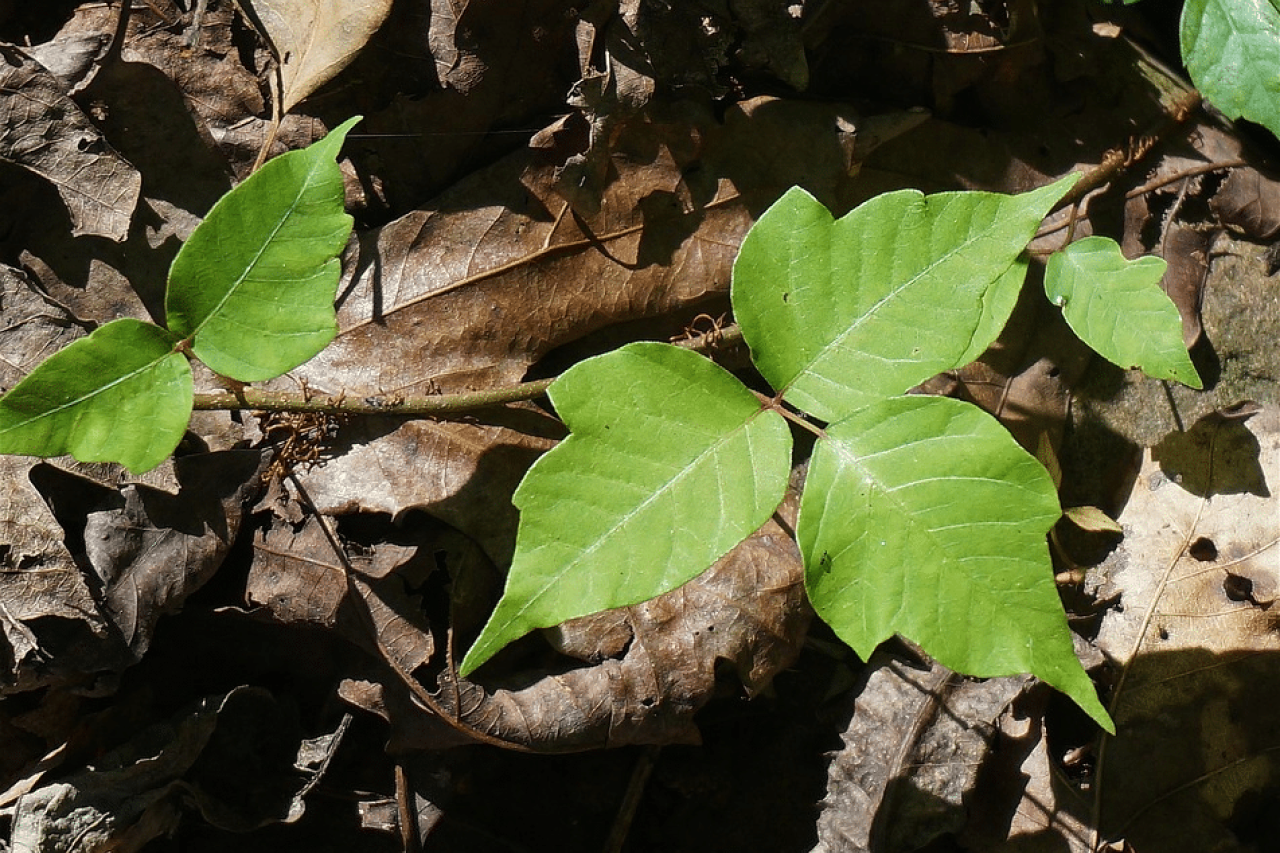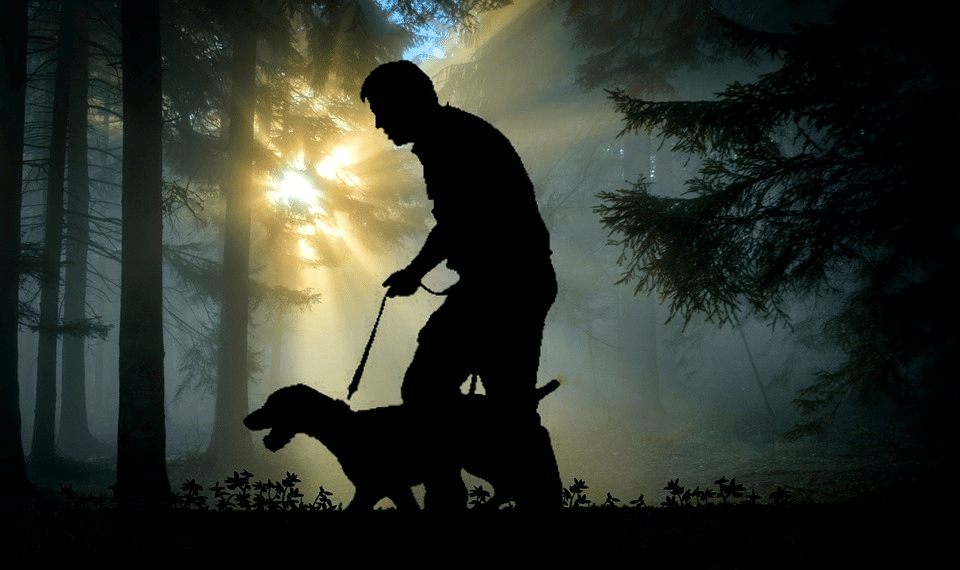
Can Dogs Get Poison Ivy? A Complete Guide to Treatment
Can dogs get poison ivy? A casual stroll through the woods can be a risky affair when your pup is running off exploring in every direction. Unfortunately, yes, your dog can get poison ivy. Fortunately, dogs getting poison ivy is not as common as it is in humans. It is tougher for poison ivy to make contact with the dog's skin since they are covered in protective fur.
If your dog does get poison ivy it is easily treatable. The Pet Poison Helpline rates poison ivy's level of toxicity as "mild," so if you see the symptoms (i.e. skin reddening, swelling, itching), there is no reason to go into panic mode.
Want to learn more about the symptoms of poison ivy and other poisonous plants (poison oak, sumac)? Learn how to treat the rash on your dog's skin if they come into contact with poisonous plant oils.
The Anacardiaceae Family: Poison Ivy, Oak, and Sumac
Can dogs get poison ivy only, or are other poisonous plants a hazard too? Dogs can get poison oak and poison sumac as well. This trio of poisonous plants has one major thing in common: urushiol. Urushiol is the oily sap found throughout all three plants on the stems, leaves, and roots. Urushiol is fast-acting and quickly absorbs into the skin once contact has been made.
This sap is what causes allergic reactions from plants of the Anacardiaceae family. The Anacardiaceae family is also commonly referred to as the Toxicodendron family.

Poison Ivy
Identifying what poison ivy looks like is as easy as one, two, three. Poison ivy plants always have three leaves. An easy rhyme to help you remember is, "leaves of three, leave them be."
Poison ivy can be found throughout most of North America except the desert, Alaska, and Hawaii. It grows in wooded areas, fields, roadsides, and along riverbanks. The middle leaf will be larger than the two leaves shooting off at the sides of the stem. The leaves will have either notched or smooth edges.

Poison Oak
The same rhyme applies to poison oak. Poison oak almost always grows in "leaves of three," but are fuzzy and occasionally have whitish-yellow berries on them.
Poison oak grows as a climbing vine or shrub (averaging about 3 feet tall) and can be found throughout North America as well, particularly along the West Coast. If you live in California, poison oak is a big problem. In May 2019, the California Poison Control System (CSPS) reported that poison oak growth has increased greatly following heavy rains and wildfires.

Poison Sumac
Poison sumac is typically found in bogs and swampy areas in the Northeast, Southeast, and Midwestern United States. Take special care if you go for a walk in the wetlands. Poison sumac thrives in super wet environments. Their leaves are elongated and oval-like with smooth edges.
The FDA describes it as a tree or small shrub with “clusters of 7-13 smooth-edged leaflets” and reddish stems. Sumac leaves are bright orange in the spring that later darken to a green shade, then turn a red-orange color in the fall.

How to Treat Poison Ivy For Dogs
If urushiol from toxic plants gets past your pet's protective fur coat and makes contact with its skin, it's important to know what a reaction to the sap looks like.
Can dogs get poison ivy and be OK? Thanks to urushiol, the most common symptom of poison ivy, poison oak, and poison sumac is simply an itchy rash. The rash will typically be found in less hairy areas of exposed skin like under the leg or belly. This itchy rash is acute contact dermatitis (inflammation of the skin) and is often accompanied by minor blistering, redness, and swelling.
Luckily poison ivy only leaves an inconvenient skin irritation, does not require a trip to the veterinarian, and is easily treatable at home.
Bathe Your Dog To Help Remove Poison Ivy Residue
Bath time. Before beginning the treatment process, however, dog parents should wear gloves. Why? Because if your dog has urushiol on its fur, it's more of a danger to you than it is to Fido. Avoid petting your dog's fur or handling them until you have put rubber gloves on.
Humans are much more sensitive to poison ivy than pets are. As a carrier of the plant oil, your dog can easily transfer it to you, leaving you as the one with the itchy rash. The itchiness can last for weeks in humans.
If you notice the aforementioned rash on your dog, the first thing you need to do is bathe them (gloves on) with warm water in either Dawn dish soap, oatmeal shampoo, or special inflammation-reducing dog shampoo. This will remove the remaining urushiol and soothe their skin.
After the bath, it's a matter of monitoring the affected area for the next few days. If the poison ivy rash is still bothering them and your dog is licking, scratching, or gnawing at it, try applying coconut oil or ask your veterinarian about giving your dog Benadryl. You can also ask the vet for a recommendation for proper topical hydrocortisone cream.
Important: Wash your clothes and the towels you used to dry off your dog as soon as possible. If your dog rubbed up against your pant leg or touched your sleeve, they probably transferred urushiol on the fabric. Wash everything that may have come into contact with a dog who walked through poison ivy, from backpacks to socks.
What If My Dog Eats Poison Ivy?
If your dog has the appetite of a bunny rabbit when outdoors — sampling every little green leaf and weed they can get their paws on — and ends up eating poison ivy, there is no need to panic.
Dr. Justine Lee, a board-certified veterinary specialist, told PetMD: “I would not induce vomiting in that situation. Thankfully, it probably just results in some mild irritation to the intestinal tract.”
So if your dog decides a poison ivy, oak, or sumac looks like a delicious salad bar, the only thing you need to pay attention to after-the-fact is their bowels. Your pup might have mild vomiting or diarrhea along with gastrointestinal upset, but it will pass.
Will My Dog Need a Vet Visit From Poison Ivy?
Dogs that get poison ivy rarely require a trip to the vet. If you have bathed them but the affected area does not clear up or looks even worse due to persistent scratching after a fews day, then take your dog in.
Your dog could scratch himself raw, leaving the area susceptible to infection or hot spot. If your dog is still uncomfortable and itchy after the bath, their excessive scratching could make the area ooze or scab. If your dog has no self-control over the scratching, consider pulling out that old "cone of shame" (aka e-collar) they wore after "the snip" in order to keep them away from the area. Take them to the vet if the rash worsens.

Can Dogs Get Poison Ivy? Protect Your Dog in Nature
If your dog gets poison ivy, it is ultimately not a big deal. All you need to do is give them a bath. Remember: you are actually in more danger than your dog is. Rubber gloves are essential to wear if your dog gets urushiol oil on its fur.
Next time you go for a walk in the woods with your pooch, keep an eye out for those "leaves of three" and steer clear of those wet spots poison sumac loves to grow in. The best way to prevent an allergic reaction to the Toxicodendron family of plants is avoidance.
Learn about our Vegan Dog Food and our Skin & Coat Dog Supplements to help provide your dog with all of the nutrients they need to thrive.
Protect Your Dog With Skin & Coat Supplements
Did you know that the top reason dogs are examined by a vet each year is skin allergies? Our vet-developed, supplements harness omega-3s, vitamins & minerals to maintain your dog’s skin and coat. Learn more about Wild Earth's Skin & Coat supplements.





























